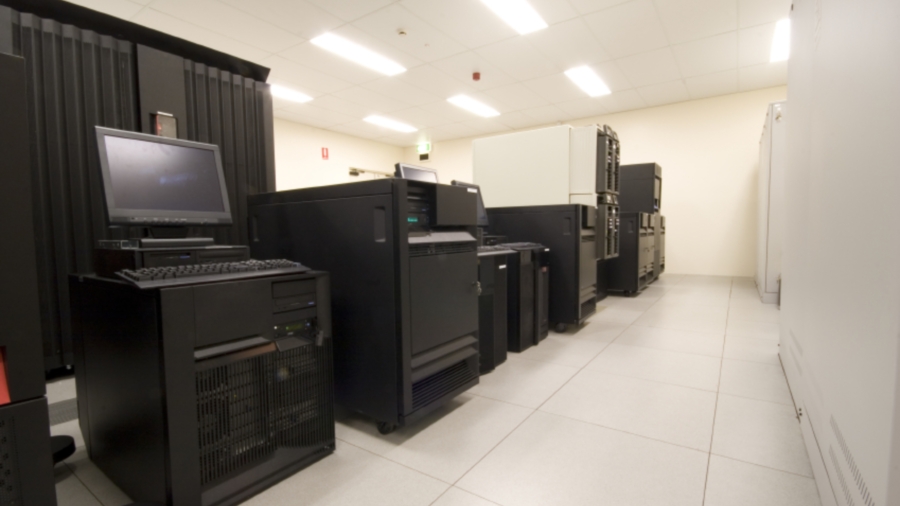Prepare for a tape storage revival
It keeps down costs and lasts longer

As storage requirements surge and compliance needs become increasingly demanding, there are predictions that companies are going to take a fresh look at the role of tape in their storage arrangements.
The growing demand for 'big data' processing is creating huge volumes of data to be managed, some of it for compliance purposes, and tape is useful once the data is no longer live and doesn't need to be accessed, says Sue Clarke, Senior Analyst at Ovum.
While this data is growing, budgets remain the same, creating a need for a cheaper form of storage than disk offers.
"Data is growing two to three times a year, but on the customer side the budget stays the same," says Hidir Mag, Senior Director, EMEA StorageTek – Tape, Oracle. "The prices are not declining at the rate of growth if you look at disk - so customers can't afford to put all the data on disk."
Tape is useful as it takes away the first tier of storage, says Jim Cook, CEO of archiving company Arkivum, adding: "The problem that the CIO is facing is, how do I stop capital equipment budget going up? His capex is increasing. Take the data that isn't being used and put it in tape storage and businesses can get off that capex treadmill."
Backup resistance
In its early days, tape was used differently than it is today and for that reason there has been resistance from some corners. Cook says: "Resistance comes in the form of bad experience some people had with backup. There's an entirely different usage paradigm.
"In the past, tapes were re-used and data is now being put on tape on a different basis. Earlier, tape did not perform as it might."
Are you a pro? Subscribe to our newsletter
Sign up to the TechRadar Pro newsletter to get all the top news, opinion, features and guidance your business needs to succeed!
Whereas 10 years ago tape was used primarily for backup, disk is now used instead. Years ago, a business simply had a database in place, holding relatively tiny amounts of data. More recently came social media and the growth of email and analytics, prompting a growth in unstructured data and the need for more storage space.
According to Mag, customers typically put 5% of data on high performance disk; 15% of recent data on high capacity disk drives; and 80% in archive.
"It is this 80% that tape is now useful for," he says, adding: "The cost per GB is 1 to 4 cents (in US money) and disk is up to $8 - for flash disk up to $20."
Traditional backup advice states that data should be stored in three different locations and on two different media.
"You can restore data from the disk," says Mag, adding: "The tape is the last line of defence."
Mag adds: "Total cost of ownership (TCO) on disk is 15 times more than tape. Also the power and cooling needs are 200 times less for tape as you just write the info and there's no need for electricity."
Tape also has better shelf life than disk. While data can stay on tape for 30 years, disk has a shelf life of just 10 years. And it's not just about data. According to EU regulations, medical patient data must be kept for 100 years.
Mag says Oracle's customers are using an increasing amount of tape, especially enterprise and search companies. He adds: "It is useful for the search companies because of new social media analytics, and big data analytics creates petabytes of data after just one analysis."
The medium is also used in many other industries, including financial services, telecoms, and by cloud companies.
But Clarke warns that there are some issues with accessing data stored on tape. She says: "If there is a discovery request, the tape holding the content has to be located and the content has to be loaded back onto disk before it can be accessed, which takes longer than accessing disk-based content, particularly if the content spans multiple tapes.
"One of the advantages of tape is that it is potable and can be stored in a vault, but again it needs to be retrieved if content is required."
Cost-effective storage
But if tape's use centres around archive, rather than random access, it is a valid and cost-effective storage method. Cook adds: "We use disk at a number of strategic layers - primarily to provide high speed cache but also inside our data centres. Tape is not good for random access."
Despite tape's return, the industry accepts the medium is not a standalone solution. Mag says: "Tape is not a disk system and isn't suitable for the role of that 20%. Tape is for the rest of the data - customer information that's over 90 days old."
Tape might have changed in its use but in reality, the medium has never gone away. "There have been several attempts in the past to kill tape off, but I think many organisations have invested too much money in it to abandon it altogether," says Clarke.
As data volumes continue to increase, the requirement for bigger and more cost effective storage methods will only continue to grow. For archiving, the humble tape offers more guarantees, at less cost.
Mag says: "Because data is growing more rapidly, tape is inevitable in the data centre for those looking at reducing TCO of storage."